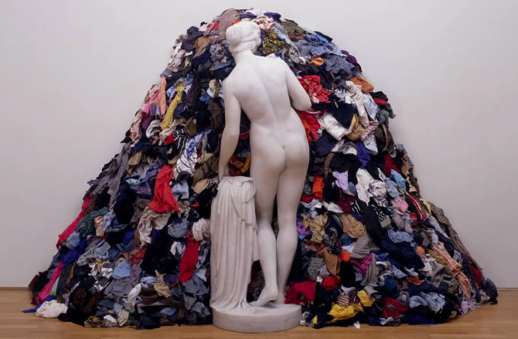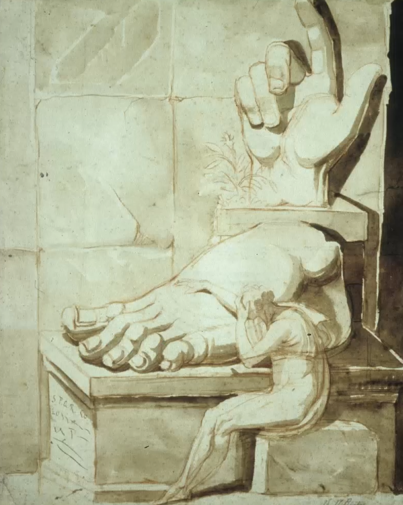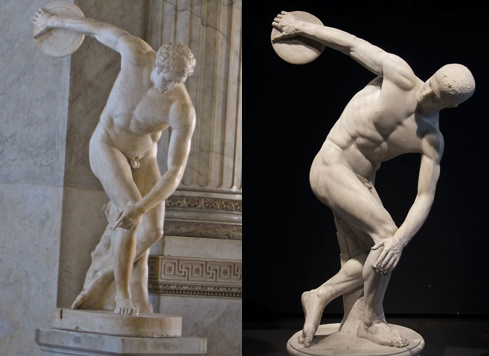Lecture 2: New Stories about Old Objects
1/6
Earn XP
Description and Tags
Antiquity's own sense of antiquity
Name | Mastery | Learn | Test | Matching | Spaced |
|---|
No study sessions yet.
7 Terms
Key Lecture Takeaways
The ancient Romans had a highly complex & creative relationship to their past.
Retrospective admiration & melancholic nostalgia
Led to:
(1) The construction of a sequential history
(2) The desire to collect (and display) works of art
E.g. Cicero: 1st century BCE Roman statesman scholar
Letters to his friend Atticus
Atticus was helping him source Greek art to decorate his countryside villa
Suitabililty of the subject & locational context > artist’s style/a specific named artist
E.g. villa was meant to encourage contemplation; peaceful rural setting was supposed to provide contrast to the big city of Rome
Cicero rejected a shipment of items that included decadent images of basic debauchery & aggressive images of Mars
NOT just blind reverence; intentional & discriminate
Contrasts collecting practices of many in the 18th-19th centuries in Europe
Indiscriminately collected classical objects with unrelated themes
Roman copies of ancient Greek works may actually be creative, even original, responses to earlier models.
NOT necessarily mindless repetition
Possibility of creative emulation that produced new, interesting, & even original works
Art historians should focus less on whether/how Roman copies replicate a possible lost Greek original, and focus more on Roman works in their own right
Assumptions of the former have led to:
(1) The elevation of earlier art & artists to a heroic status
Reliance on & repetition of written evaluations by ancient Greeks
Relative lack of surviving Greek works
= later Roman & modern-day writers unable to come to their own independent judgements
(2) A challenge to/criticism of present-day art
Ancient artworks as perfect models that the present couldn’t possibly hope to emulate
Greece vs. Rome
(3) Reliance on Roman copies to reconstruct ancient Greek perfection
BUT these approximations may not actually be useful/accurate
(4) Misplaced focus on searching for the elusive Greek original
WITHOUT properly understanding the viewing contexts that originally gave them meaning
We need to reassess Roman copies of Greek works in their own terms rather than in ours
What do they tell us, NOT about Greece, but about Rome
Integration into domestic & public spaces?
Interpretation by diverse Roman & Greek audiences?

Venus of the Rags (1974), Michelangelo Pistoletto
Provenance
Multiple versions made using diff. materials
(a) Original: concrete/cement
(b) Hand-carved from an expensive block of Greek marble
(c) Gilded
(d) Gigantic polythene copy
Description
Pile of rags
Marble sculpture copied from a concrete statue bought in a garden centre
Itself was a Neoclassical imitation of an ancient original by sculptor Bertel Thorvalsen
Callipygian Venus type
Replica of a replica
Dubious r/s to any purported original
Interpretation
Ironic comment on classicising canons of Western art history
Tension between the banality of reproduction & the creative possibilities of emulation
Same tension lies at the heart of Roman art’s r/s to its own canonical past in ancient Greece
Demonstrates a willingness to deploy any & all aspects of life in art
Unites a series of oppositions: hard/soft, formed/unformed, monochrome/coloured, precious/disregarded, historical/contemporary, unique/common, high/low
Arte Povera (poor art) movement

The Artist in despair over the magnitude of antique fragments (ca. 1788), Henry Fuseli
Provenance
Drawing
Description
Depicts an artist w/ his elbow resting on a puny sketchpad
Overwhelmed by the wonder & enormity of ancient art (literal size & metaphorical grandeur)
Interpretation
The oppressive feeling that it must be impossible to ever meet (let alone exceed) the achievements of classical predecessors

Diskobolos vs. Diskobolos Lancellotti
Provenance
Bronze original made by Myron (5th century BCE)
Controversy
Several Roman marble copies survive to this day, each w/ subtle differences
E.g. Diskobolos Lancellotti has its head looking back (as described by Lucian’s writing) vs. Diskobolos doesn’t
Modern scholars have obsessively tried to decide which of the 3 versions is really based on Myron’s lost original
Rather than considering that variations may be a part of Roman artists’ interpretative/creative responses to the lost original
Adolf Hitler’s usage of the Diskobolos Lancellotti as part of his propaganda program
Bought it from 1938 from the pro-Nazi fascist government of Mussolini
A body that supported his claim that the Aryan race were the true inheritors of the ancient Greeks
Greeks regarded as the greatest of all ancient civilisations
Villa of Emperor Hadrian @ Tivoli
Provenance
Built & decorated in the 1st half of the 2nd century CE (50-100 CE)
Description
Collected & displayed objects from throughout his empire
NOT only Greece but also Egypt, etc.
Diversity of collection broadcasted the universalising ambitions of the patron
Collected BOTH old/original versions & modern copies of famous statues, displayed as multiples
Intentionally highlighted their status as imitations
= suggested sophisticated & self-conscious understanding of Rome’s relationship to an ancient Greek past, which is very different to what modern scholars have retrospectively proposed
Interpretation
Meant to serve as a microcosm of the world itself
Over which Hadrian was eager to assert his authority (militarily & culturally)
Salvator Settis, ‘Did the ancients have an antiquity?’
The ancients experienced their own sense of antiquity and Renaissance (rebirth)
(a) Scholars have argued for >1 definitive Renaissance
E.g. the Carolingian Renaissance (8th-9th centuries), the Byzantine Renaissances
E.g. within antiquity itself: Gallienic Renaissance (during Emperor Gallienus’s short reign: a return to classical forms inspired by Augustus & Hadrian, marked by a romantic attitude towards a classical past, to legitimise authority during a turbulent period)
(b) The ancients understood antiquity as something which could die but be repeatedly reborn (cyclical view of cultural revival)
Romans (e.g. Pliny) evaluated Roman art by referring to Greek art
By late antiquity, Greek art had become canonised
Romans produced almost NO written criticism of contemporary Roman art
Being able to retrospectively invoke Greek art = privilege of educated classes (e.g. collecting, copying, ‘quoting’)
Modern art history could be described as a literary genre invented by the Greeks and then transmitted by Pliny
It was the ancients’ sense of antiquity that gave rise to our own idea of antiquity
Pliny the Elder wrote the only surviving compendium of ancient art history, handing down ideas from prior writings about art
E.g. the biological pattern of evolution —> Winckelmann
Leonard Barkan, ‘Histories’
Important role of ancient texts in the Renaissance
Ancient art was rediscovered & reimagined through archaeological finds AND ancient texts (e.g. Natural History)
Provided insight into how the ancients viewed art
Guided scholars’ integration of ancient art —> contemporary contexts
Pliny the Elder’s influence on Art History (see Tutorial 1 flashcard)